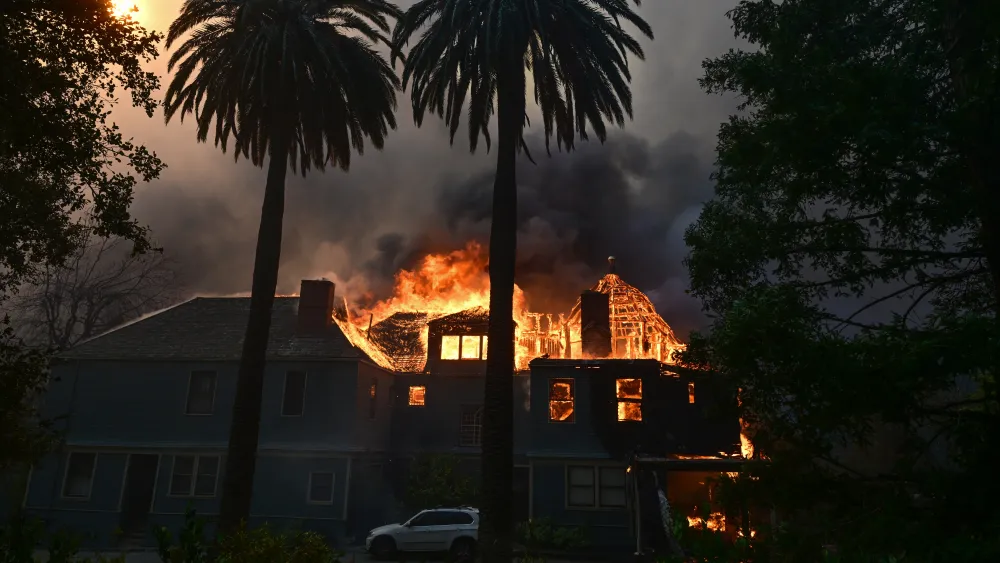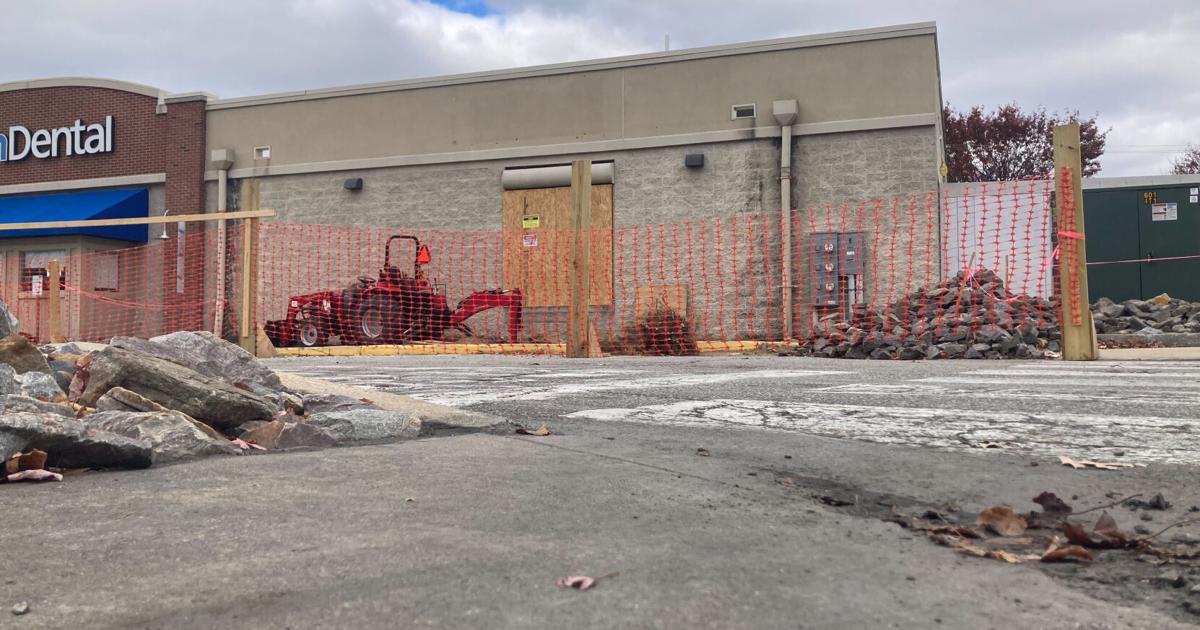Copyright Variety

It’s never good form to focus on how a natural disaster disproportionately affects the wealthy, but it’s a particularly bad idea in the current climate, when phrases like “eat the rich” are trending on X. But the fact of the matter is that many of the 12,048 residential properties destroyed in the Los Angeles fires in January belonged to celebrities — including Adam Brody, Tyra Banks, Billy Crystal, Mel Gibson, John Goodman, Anthony Hopkins, Paris Hilton, Eugene Levy, Julia Louis-Dreyfus, John C. Reilly, and Miles Teller — and a majority were owned by people who were at least moderately wealthy, a large portion of whom were behind-the-scenes creatives, execs, below-the-line workers and other industryites. The median value of the homes lost in the Palisades Fire, which wiped out large swaths of Pacific Palisades and Malibu, was $3.7 million, and 79 of them were worth $10 million or more. With the Eaton Fire, which raged through upper-middle-class and working-class sections of Altadena and Pasadena, the median value was $1.2 million, still well above the $868,000 median value of homes in Los Angeles County. It would be wrong to diminish people’s pain, anxiety and trauma simply because they’re rich and famous. Like everyone else, they didn’t just lose their residences. The fires torched what “home” represents — safety, security, consistency, comfort, shared family experiences and self-worth. But, to paraphrase F. Scott Fitzgerald, the rich are not like us. They have special problems and special privileges, the latter of which often include not only large financial reserves, but a team of people dedicated to managing them, known as business managers. New York-based Carrie Malcolm of CRM Business Management has a client who lost three homes — a house he was renovating, a house he was renting and a condo he bought for a relative to live in. The client’s friend suggested he use what is known as “public adjuster” to get the matter settled (presumably) more quickly, but she was able to convince him that the adjuster’s 10% cut of the settlement was too high a price tag. Instead, she enlisted the services of an attorney with the insurance brokerage Higginbotham, which has a strong relationship with her firm’s parent company, NKSFB, to serve as a go-between with the client’s insurer for an hourly fee. “[The client] has been getting paid for all their cost of living and their personal property,” explains Malcolm. But “it’s a little complicated with the renovation [determining] what was new and what was already done.” Christopher Curry of Forward Business Management didn’t have any clients lose their homes, but he did help a few threatened by the fires get evacuated, then dealt with insurance companies to secure claims for smoke damage and moving and lodging expenses. But clients who just wanted to get out of L.A. to avoid the fires had some trouble with California laws designed to prevent rent-gouging. “The amount they were allowed to rent for was less than the mortgage, so they were going to lose money on the deal if they just wanted to get out of L.A. for three or four months,” he explains. Going forward, one of the biggest problems — perhaps bigger than permitting and the scarcity of materials and qualified contractors — is homeowners insurance. Rates had been climbing for several years, and in the wake of the fires, they went through the roof. That’s because well-off Angelenos tend to live on mountains and hillsides and in canyons that are covered in highly flammable chaparral, which are an excellent breeding ground for rapidly spreading fires, driven by Santa Ana winds of up to 100 mph. “[From] Sunset Boulevard to Ventura [Boulevard], anyone up in those hills, we tell clients that they’re going to pay close to six figures for homeowners insurance, and that’s every year, in after-tax dollars,” says Mark Cattalini of Level Four Business Management, who has multiple clients, as well as partners and employees, who lost homes in the fires. “We’ve seen people’s bills triple, quadruple. We’ve seen premiums for a million dollars.” Even more disturbing are older people on fixed incomes who’ve suddenly found themselves staring at that huge bill. “They can’t afford to pay it, but when you try and go to sell your house, no one else wants to buy it, because they don’t want to pay $100,000 a year for homeowners insurance,” he explains. Steves Rodriguez of Freemark Financial says affluent Angelenos looking for high-end housing with lower insurance rates should explore the flats in areas like Santa Monica and Hancock Park, a large, mansion-rich neighborhood south of Hollywood that pre-dates Beverly Hills. “Your insurance is probably going to be half, if not less,” he notes. Adam Yorkshire of Yorkshire Management Group says that, historically, his Los Angeles-based clients would “flip up” every four or five years and buy a better home, which is no longer feasible due to the high cost of insurance. As a result, people are looking to move to other states or out of the country entirely. He says, “The kneejerk response is to go to a no-[income]-tax state,” such as Florida, Nevada, Tennessee, Texas or Wyoming. “And a lot of people go out there and look, and sometimes they move, and sometimes they come back and say, ‘I understand why L.A. is so expensive.’” Those looking to buy a house in a high-fire-risk area in California might not be able to find traditional homeowners insurance, no matter how much they pay. For them, there’s California’s FAIR Plan, but that coverage tops out at $3 million. They can also turn to “non-admitted” insurance carriers, which offer more flexibility because they aren’t required to follow state regulations. But if those companies lose their ability to pay after, say, a large natural disaster, the state won’t step in and pay out their claims like they would with an “admitted” carrier like a State Farm or an Allstate. You can’t always count on California, either. Mark Tinglof of Shephard Tinglof + Associates says the FAIR plan is refusing to pay for smoke damage suffered by two houses owned by one of his clients. “I have to go out and hire a litigator to go after the FAIR Plan people so I can recover the $500,000 to $600,000 [the client paid out of pocket] to get all the smoke damage remediated,” he explains. “But my client’s in a fortunate position because he has a lot of money.” But many of those who appear to have emerged relatively unscathed, with their lives, homes and irreplaceable mementos intact, have suffered indescribably painful losses that no insurance settlement can ameliorate. One of them is a client of David Lloyd of Gelfand, Rennert & Feldman, who moved to the Palisades with her husband a year and a half ago. Her home suffered smoke damage but survived. Too many of those around her weren’t so lucky. “She and her husband moved there for the community,” Lloyd explains. “They have to make the very challenging choice about how they’re going to live for the next couple of years, let alone after that, because the community that they moved to the Palisades for doesn’t exist.”



